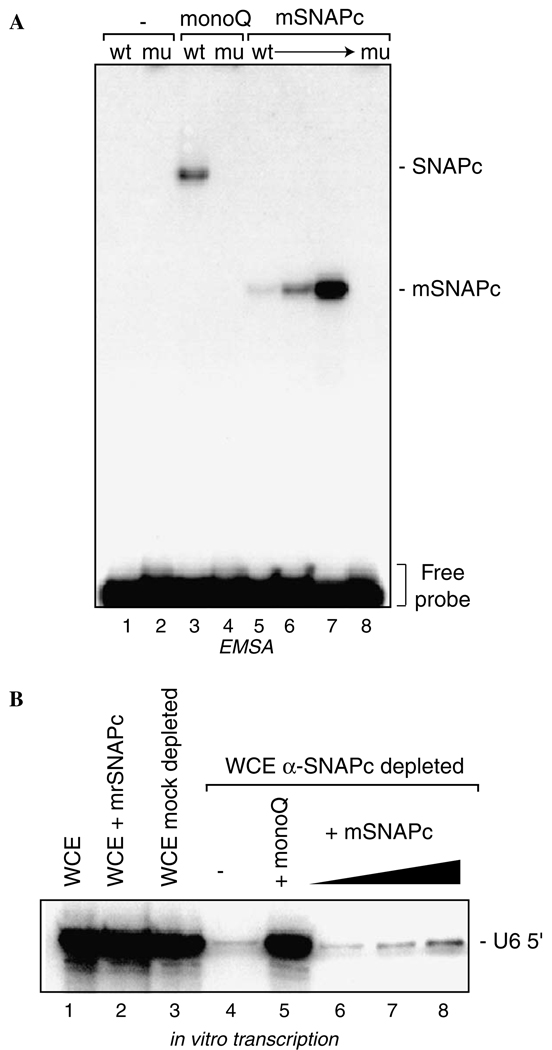Fig. 1.
A partial SNAPC assembled from individually expressed subunits is functional for DNA binding but not for transcription of a human U6 snRNA gene by RNA polymerase III. (A) Increasing amounts of mini-SNAPC that was assembled from subunits individually expressed in E. coli (~1, 2.5, and 7.5 ng; lanes 5–7, respectively) were added to EMSA reactions containing dsDNA probes containing a wild-type (wt) or mutant (mu) PSE, as indicated. Reactions loaded in lanes 3 and 4 contained 7.5 µL of partially purified endogenous SNAPC (~0.3 ng SNAPC/mL). Reactions containing only the probe DNAs are shown in lanes 1 and 2. (B) Increasing amounts of mini-SNAPC were added to human U6 in vitro transcription reactions for which the HeLa whole cell extract (WCE) was treated with α-SNAP43 antisera to remove endogenous SNAPC, as shown in lanes 6–8. Lane 4 shows the decreased signal for the correctly initiated U6 transcription upon removal of endogenous SNAPC. Lane 5 shows the U6 signal dependent upon addition of endogenous SNAPC obtained from biochemical fractionation of a HeLa cell nuclear extract. Note, this signal is comparable to the mock depleted WCE (lane 3) or WCE alone (lane 1).

